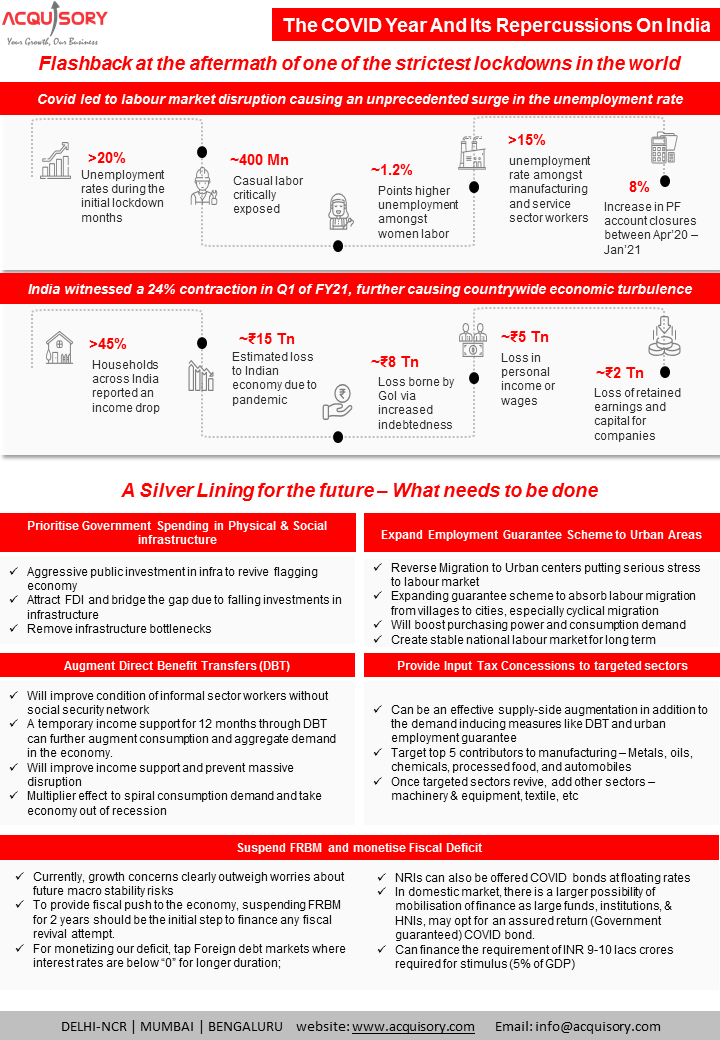“ WHO has been assessing this outbreak around the clock, and we are deeply concerned, both by the alarming levels of spread and severity and by the alarming levels of inaction. We have therefore made the assessment that COVID-19 can be characterized as a pandemic. ” – Director General, WHO, March 2020
With these few words, WHO made clear that the way we lived was going to change imminently — and it did.
It has been a year since the start of the COVID-19 pandemic, which has changed the ways in which each of us relates to the world. We look back at how India fared in the last 12 months and how the next 12 moths may have in store for all of us.
For us, more than a public health crisis, it has been a year of economic crisis manifested most severely in the labour market.
Experts feared that India would suffer heavily, economically, and otherwise. Tried and tested methodology predicted almost 300 mn infections by the middle of 2020. On the face of it, India was battered by the world’s 3rd highest number of infections, we spent time under the severest of lockdowns and in turn faced one of the sharpest contractions anywhere in the world. In the first and second waves, more than 13 million have contracted the virus and more than 165,000 have perished. But India’s story is also that of surprise. We have witnessed one of the lowest death rates amongst large countries and given the precarious health infrastructure have done remarkably well in controlling the gigantic wave of infection.
However, India’s economy has taken a massive hit. A return to growth is expected this year. However, if experience from previous shocks is any indication, there will be lasting damage. We are in the middle of a once-in-a-lifetime disruption to all facets of life – social, political, and economic.
In the face of the pandemic the structure of the economy, especially that of the labour market typified the extreme vulnerability of India’s workers.
We look back at 2020-21 and the pandemics impact on the economy.

Read full article - Download